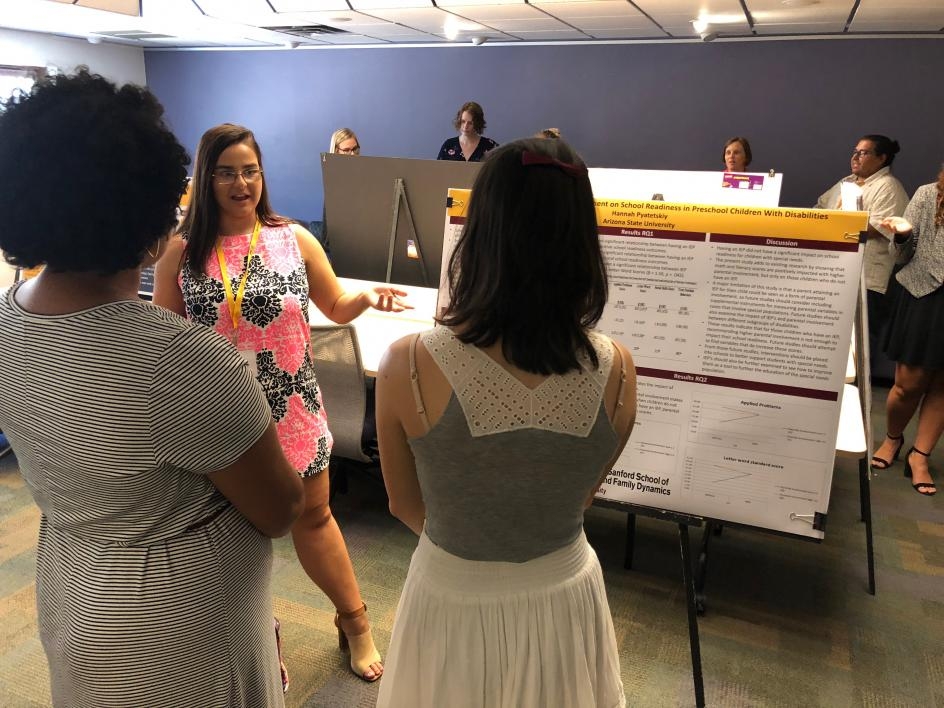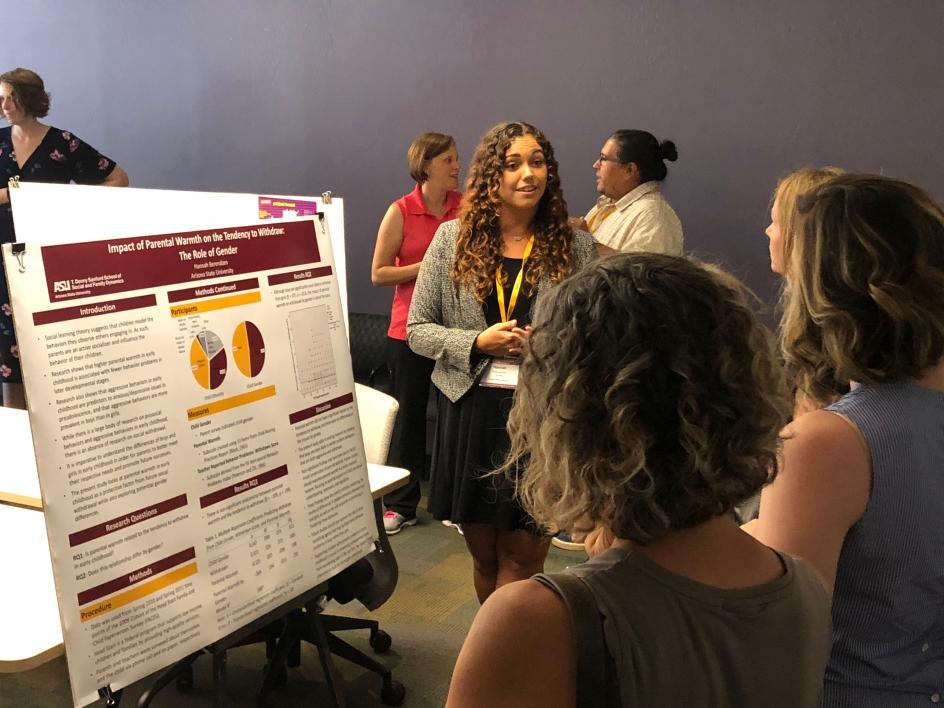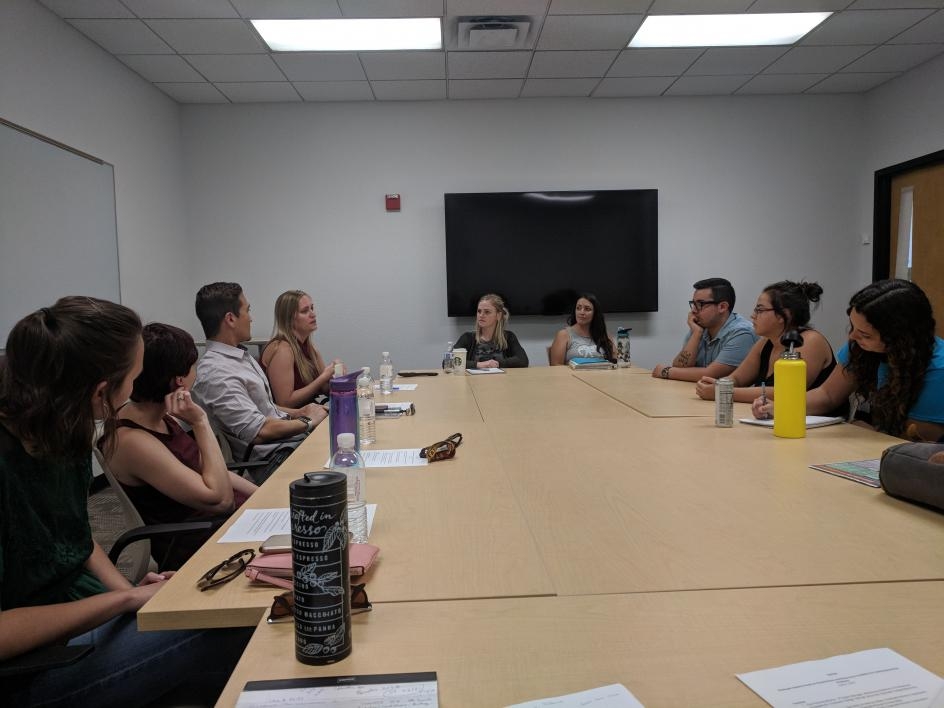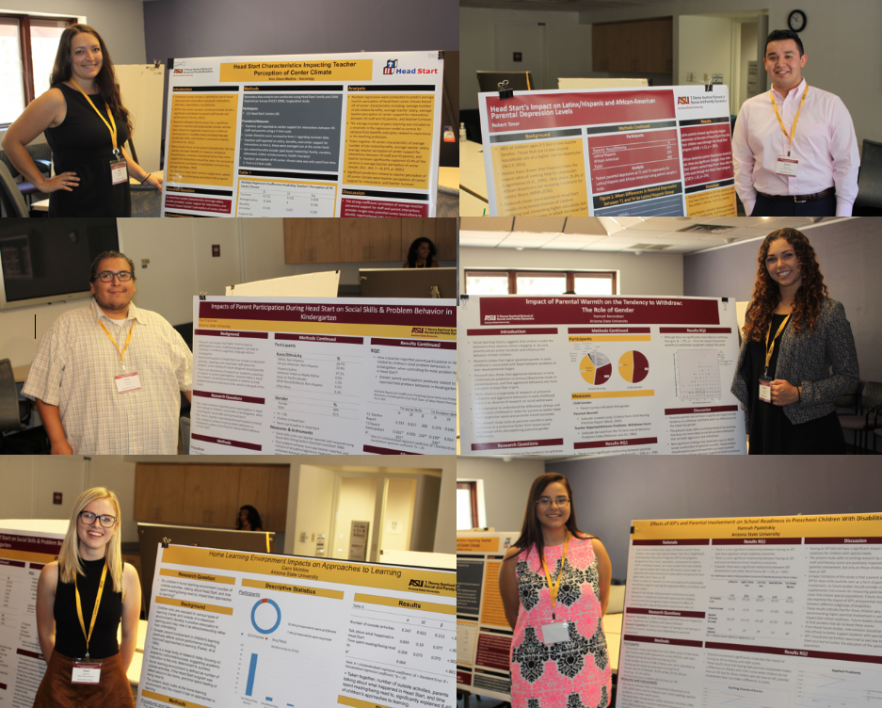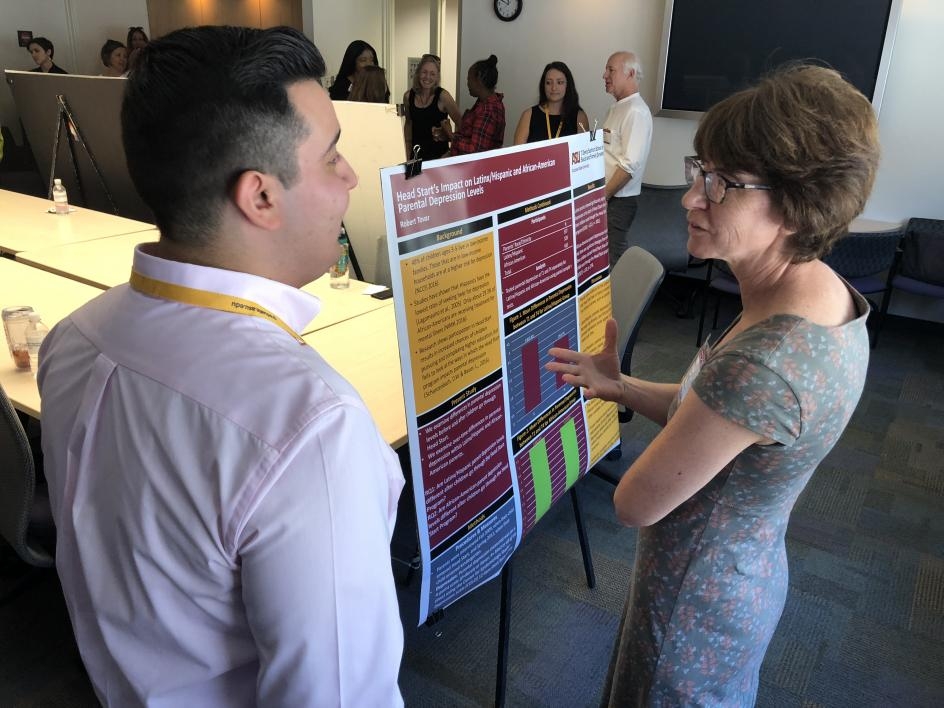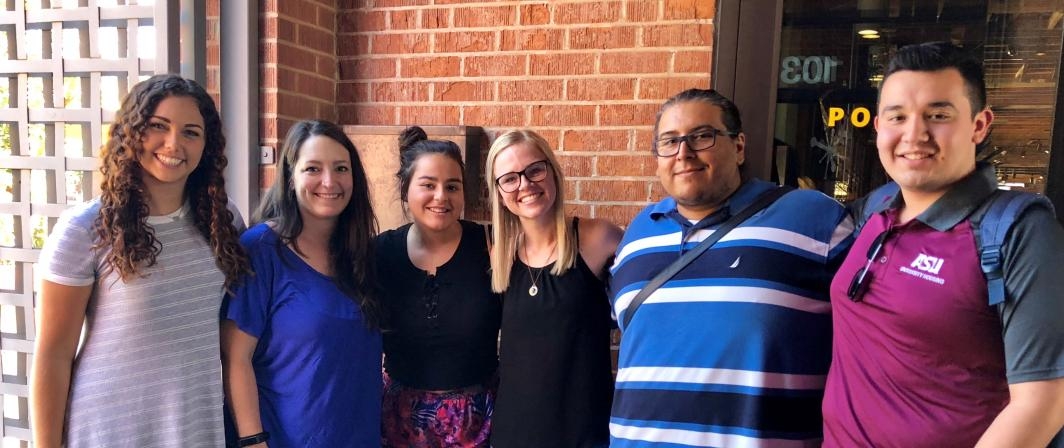Beyond undergrad: Putting graduate school in reach for underrepresented students
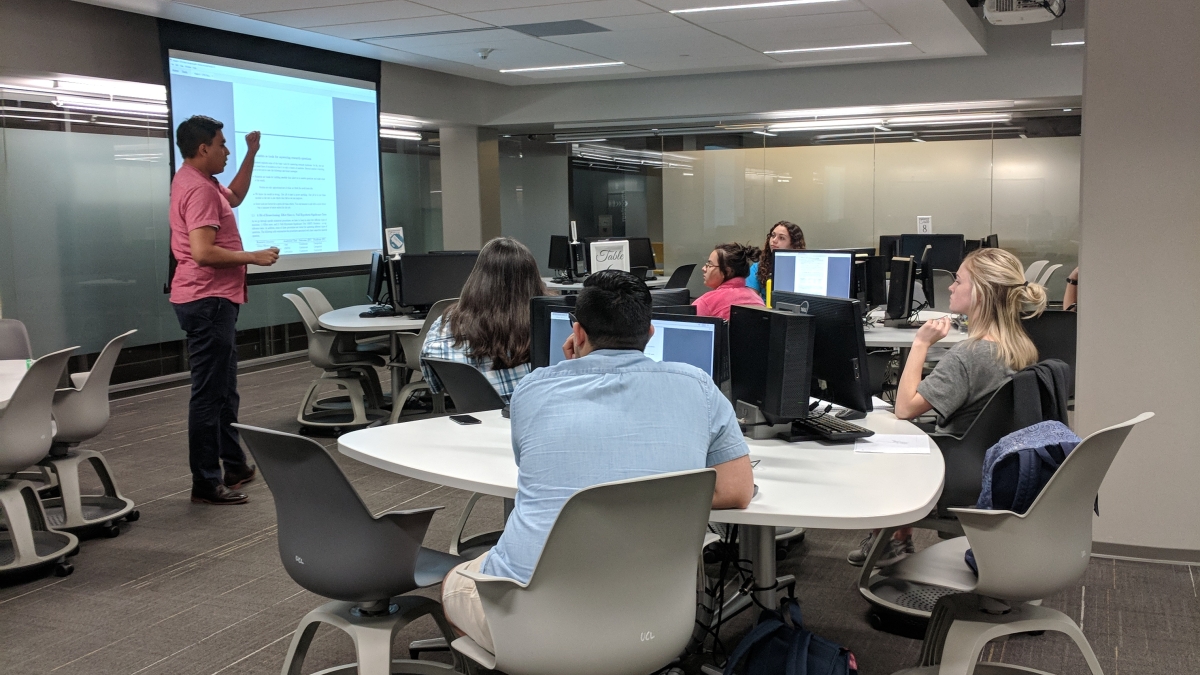
Edwin Vasquez with 2018 SUPER fellows.
In 1954, a group of 32 social scientists led by Kenneth B. Clark, an African-American psychologist, filed a brief with the U.S. Supreme Court summarizing the extant research — including some of Clark's — on the impact that segregation had on children.
The detrimental effect described in this brief was cited by the Supreme Court as one of the considerations that led to the historic Brown v. Board of Education ruling. In this decision, the Supreme Court overturned the almost-60-year-old “separate but equal” doctrine that allowed public facilities, including schools, to be racially segregated. This ruling led to the beginning of the school desegregation process in the U.S. and was an important step in the civil rights movement.
The role that Clark and his fellow researchers played in supporting the school desegregation process is an example of how research and science have an important role in helping humanity move forward. Such improvements are the result of the work of many researchers who have worked tirelessly throughout the years to improve our understanding of the world around us.
However, when you ask undergraduate students to share their ideas around research, many of them tend to associate it with boring, repetitive work that can only be done well by very few people, and that it is usually done in a lab or in front of a computer with little connection to the world at large. It comes as no surprise then that few undergraduates are interested in exploring research as potential careers.
This attitude can be especially salient for students from underrepresented populations, who rarely see people like them leading research studies, creating the sense that a career in research might not be a professional fit for them. These ideas could drive potential Kenneth B. Clarks out of the research field. As was the case in the Brown v. Board of Education ruling, talented, underrepresented students interested in improving the lives of their fellow humans — and with the skills and drive to make it happen — can bring new experiences and perspectives and contribute novel and effective ideas to solve social and community problems.
Recognizing this enormous amount of untapped potential, Richard Fabes, director of ASU’s T. Denny Sanford School of Social and Family Dynamics, formed a committee two years ago to identify strategies that would enhance access and opportunities for Sanford School students from diverse backgrounds to become involved in research within the social sciences.
The committeeSUPER committee co-chairs: Manuela Jimenez and Casey Sechler; SUPER committee members: Arlyn Moreno, Natalie Wilkens, Tashia Abry, Crystal Bryce, Megan Costa, Cassandra Cotton, Jenny Padilla, Edwin Vasquez; former committee members: Stefanie Fuentes, Jose Causadias., led by co-chairs Manuela Jimenez and Casey Sechler, developed SUPER (Summer Undergraduate Program for Engaging with Research), an intensive six-week program designed to provide these students with meaningful, hands-on experience with research, as well as guided professional development. Six rising juniors and seniors in the Sanford School were selected to participate in the first annual SUPER program last summer.
Part of the Diversity and Inclusion Science Initiative, SUPER was structured around three pillars: research, career and diversity.
“The intent of this program is to support underrepresented students in entering the research pipeline,” Fabes said.
To meet this goal, the Sanford School focused the program on providing comprehensive support for SUPER fellows that allowed them to get a good taste of the research experience.
The program included structured learning opportunities directed and facilitated by a range of Sanford School faculty, staff, postdoctoral research fellows and graduate students who were thoughtfully selected to ensure that SUPER fellows had ample opportunities to engage with researchers who more closely resembled them or who are conducting research that matched the fellows’ broad interests and had a direct connection with the community. The school also provided fellows with a stipend for their 20-hours-a-week participation in the program in an effort to remove any financial barriers that could have obstructed fellows’ engagement with the program.
Pillar 1: Research
In their applications to the program, the SUPER fellows shared that they had learned about research through their college classes, but felt like they did not have the knowledge and skills needed to conduct their own research projects.
“Prior to SUPER, I had an idea that I wanted to be involved with research, but I had no idea what really went into research as a process, (or) how data is analyzed”, said Paul Espinoza, a junior in the sociology program.
To address this concern, SUPER fellows engaged directly with the research process by independently developing a research question that they could address and present in the program's culminating poster session. Fellows gained access to Head Start’s Family and Child Experiences Survey dataset and used it to develop their research questions. The use of this dataset allowed fellows to have a shared research experience where they could work together and also gave them the opportunity to familiarize themselves with a sample that reflected DISI’s interest in the experience of underrepresented populations — in this case children from low-income families.

Edwin Vasquez working with a SUPER fellow.
SUPER’s research pillar involved guiding fellows through the process of empirically testing their research questions and hypotheses. “First and foremost, I hoped to introduce students to their own potential and what they are capable of doing,” said Edwin Vazquez, a graduate student leading some of the activities within the "research" pillar.
According to Vazquez, “Everything else stemmed from this simple concept.”
He remained steadfast in his aim to present SUPER fellows with a challenge and ample time and space for them to practice and develop requisite skills to meet this demand. As such, the "research" pillar included lectures, practice sessions and one-on-one and peer advisory meetings where students could share their progress and questions, and learn from other fellows and from the SUPER faculty.
“By the time students were presenting their poster, they had already practiced a particular skill (e.g., interpreting and reporting statistical results) not once, not twice, but three or four times — each with increasing difficulty,” Vazquez said.
Pillar 2: Career
Many of the SUPER fellows arrived to the program with the goal of bringing change to the world around them, but didn’t really see how research could help them achieve that goal. Even those fellows who were already considering research as a potential professional path shared that they did not know how to effectively navigate the path to graduate school.
This lack of knowledge can be a major barrier for undergraduate students to access research-related careers, especially for underrepresented students. Accordingly, SUPER’s career pillar focused on guiding fellows in further developing their professional goals by exposing them to a variety of research-related careers and clarifying pathways towards these types of positions.
Through a series of panels and workshops, fellows received training in how to identify potential graduate programs that match their needs and career interests and how to structure their remaining undergraduate experience and craft their applications to maximize the likelihood of being accepted into the program of their choice. Additionally, fellows met with faculty across campus, DISI postdocs, Sanford School graduate students and professionals who pursued research-related careers outside of academia.
Fellows learned about what inspired these folks to dedicate their careers to research, as well as what was included among day-to-day activities so they could begin imagining themselves in these types of positions.
“The SUPER program opened my eyes to the various career opportunities the research field has to offer while simultaneously boosting my confidence in my research skills. ... I met so many incredible professors and relatable graduate students,” said Cami McIntire, a senior in the family and human development program.
Pillar 3: Diversity
For the "diversity" pillar, SUPER focused on broadening fellows’ understanding of diversity.
“Diversity in research and academia would mainly refer to information and processes among non-white groups,” said Stefanie Fuentes, a graduate student who co-led the development of the diversity pillar. “However, through readings and discussion we hoped to show fellows that diversity can refer to anything that makes up an individual ... so not just race and ethnicity, but gender, socioeconomic status, political affiliations, religion, skin color, etc.”
These discussions provided fellows with opportunities to reflect about the role that diversity and underrepresentation play in the well-being of children, youth and families and to broaden the scope of challenges and solutions they could address through their potential research careers.
The "diversity" pillar was also designed to prepare SUPER fellows for potential challenges and opportunities that they, as members of underrepresented groups, may face in research careers and subsequently provide them with tools and resources to help them succeed. A large component of this was self-disclosure from faculty, postdocs, and graduate students about their experiences in research careers.
Jenny Padilla, a first-generation college student, led the "diversity" activities: “I am open with students about my personal experiences and struggles as a child of immigrants and the first in my family to navigate institutions of higher education. I discuss who I am and how I got here to help students feel connected, empowered, and comfortable in sharing their stories and ideas. Being transparent about your own experiences can have a profound impact and really help students see what is possible.”
A SUPER opportunity
At the end of their six-week research experience, SUPER fellows presented their research in a poster session. This poster session was a culmination of the work the fellows had done during the program and allowed them to experience an important piece of the research process by sharing their findings with other researchers. Although this was a nerve-wracking experience for many of the fellows, the quality of their work and their presentation shone through the nerves.
“The SUPER poster presentation was a highlight of my summer. It was just so exciting and inspiring to see students harness their talent, curiosity, and persistence — joined with the resources and data SUPER provides — to tackle important research questions and actually complete research projects! I kept thinking that I couldn’t believe they had done this in six weeks,” said Rebecca White, associate professor at the Sanford School.
At the end of the poster session, fellows received a certificate honoring them for their dedication, hard work and successful and impressive final products. According to Vazquez, one of the fellows really summarized the impact of the program during their poster session when they expressed that they had found their passion in research, but most importantly, they knew they could do it now.
“If that isn’t a successful SUPER student, I don’t know what is!” Vazquez said.
Although it was the end of their SUPER experience, the impact of the program continues.
“I know without a doubt that I will continue to work hard and apply to PhD programs that interest me, because of what I learned through SUPER," Espinoza said.
As a testimony of their commitment, all SUPER fellows secured research or teaching assistantships with faculty and graduate students at the Sanford School for the fall semester.
Do you know of any Sanford School students who would be a fit for SUPER? The SUPER committee is currently planning and developing the second cohort of the SUPER program. If you are interested in the program or would like more information, contact Arlyn Moreno at amorenol@asu.edu or visit the SUPER website. SUPER applications for 2019 will be opening on Oct. 15.
More Arts, humanities and education

ASU professor’s award-winning book allows her to launch scholarship for children of female shrimp traders in Mexico
When Arizona State University Associate Professor Maria Cruz-Torres set out to conduct the fieldwork for her third book, "Pink…

Herberger Institute Professor Liz Lerman to be honored as Dance Magazine Award winner
Dance Magazine has announced that Arizona State University Herberger Institute Professor Liz Lerman will be honored as a…
AI literacy course prepares ASU students to set cultural norms for new technology
As the use of artificial intelligence spreads rapidly to every discipline at Arizona State University, it’s essential for…
